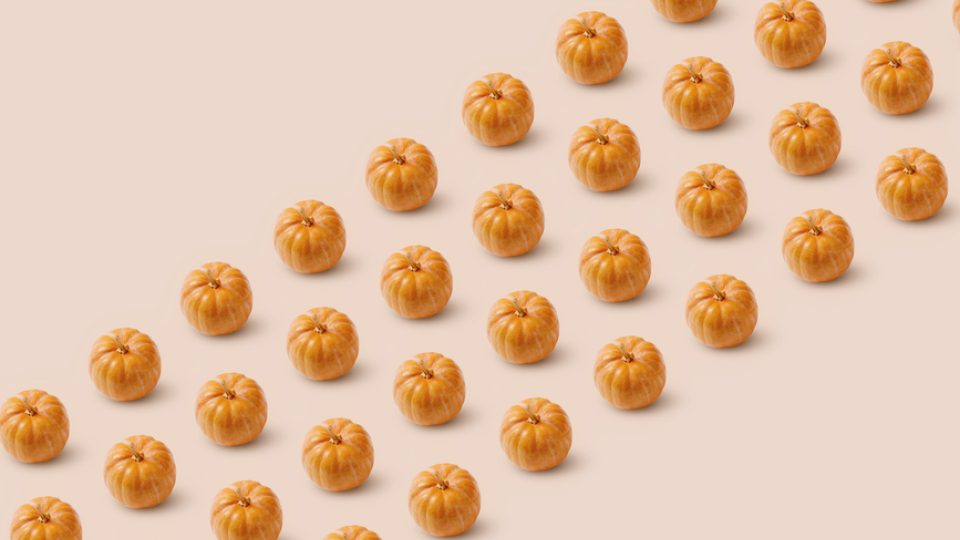
When the leaves turn orange, that means it’s time to indulge in fall’s tastiest orange treat: the pumpkin.
If you set an alarm on the morning your favorite coffee shop starts serving their pumpkin spice latte, or if you like to indulge in a huge slice of pumpkin pie as soon as the temperature drops, no judgment — both are delicious. But there are many other just-as-tasty ways to enjoy pumpkin during the autumn months that are a bit less sugary and loaded with powerhouse nutrients.
What makes a pumpkin nutritious?
Pumpkin is an incredible source of beta-carotene, which is an antioxidant that our bodies convert to vitamin A, says Chelsea Whealdon, a dietician at UW Medical Center – Roosevelt.
“Some key roles of vitamin A include strengthening the immune system, supporting healthy vision and proper cell functioning,” says Whealdon. “Just one cup of pumpkin provides well over 100% of the daily recommended intake for vitamin A.”
Pumpkins are also a great source of fiber, rich in antioxidants and contain other vitamins and minerals, including vitamin C, potassium and iron.
“In addition to beta-carotene, pumpkins are rich in several other antioxidants, which can help protect against cell damage and may help lower the risk of cancer,” says Whealdon. “Plus, the fiber found in pumpkin helps support heart health and normal cholesterol levels.”
The potassium in pumpkins can help improve elevated blood pressure levels, she adds.
Plus, if you’re looking to maintain a healthy gut, the fiber in pumpkin also contributes to a healthy gut microbiome.
Three easy ways to add pumpkin to your diet
Don’t worry, you don’t have to carve and gut massive jack-o-lanterns each time you crave a pumpkin snack. Whealdon recommends starting with a smaller pumpkin, which is easier to prepare.
She says typically, people eat the soft, fibrous part of the pumpkin often referred to as the flesh (yes, like some kind of veggie zombie).
Roast it
“Like other squash, pumpkin is delicious roasted,” says Whealdon. “A really simple way to roast it would be with olive oil, salt and pepper and served as a side.”
How to roast pumpkin:
- Preheat your oven to 400 degrees.
- Scoop out the insides of the pumpkin. (Save the seeds!)
- Cut the pumpkin into one-inch slices.
- Lightly coat with some olive oil and your preferred seasonings.
- Oven roast for about 18-20 minutes, then enjoy!
Purée it
Pumpkin purée is a tasty alternative to traditional ingredients — or can be the star of the show.
“You can add pumpkin purée to muffins, pumpkin bread, soups, pumpkin-spiced oats or even smoothies,” says Whealdon. “Some people like adding pumpkin to lasagnas, pasta sauces or curries — which is my personal favorite.”
Pumpkin purée also works as a great ingredient substitute for eggs, oil and butter.
How to purée pumpkin:
- Preheat your oven to 400 degrees.
- Scoop out the insides of the pumpkin. (Again, save the seeds!)
- Cut the pumpkin into one-inch slices.
- Cook for 45 minutes to an hour.
- When cooled, scoop the pumpkin flesh into a food processor and process for about 3-5 minutes or until smooth.
If you’re not one to make your own pumpkin purée, Whealdon says store-bought is fine. Make sure to get unsweetened pumpkin purée and add it to your favorite fall recipes.
Toast the seeds
Don’t like the pumpkin’s fleshy parts? You can also eat the seeds.
“You can toast and eat the pumpkin seeds,” says Whealdon. “They’re a wonderful, healthy, crunchy snack and a good source of magnesium, zinc and protein.”
How to toast pumpkin seeds:
- Preheat your oven to 350 degrees.
- Scoop out the insides of the pumpkin and separate out the seeds.
- Give the seeds a good wash, then toss in some olive oil and your favorite seasonings.
- Bake the seeds until they’re light brown and crispy, about 12-15 minutes.
Prefer a sweet over savory taste? Toss the seeds with some honey and cinnamon before roasting.
Whealdon recommends sprinkling the seeds on top of oatmeal or in a salad, or you can eat them right out of the oven.
Pumpkin alternatives for the pumpkin-curious
If you’re still unsure about pumpkin everything, Whealdon suggests swapping the pumpkin for a different gourd with similar health benefits.
“If you don’t like the taste of pumpkin, you could swap it for butternut squash instead, which is also an excellent source of the nutrients found in pumpkins,” Whealdon says.
Kabocha squash is another great pumpkin alternative and a good way to ease yourself into the gourd life if butternut squash isn’t your thing. It has a sweet and nutty profile and is smaller, so it’s easier to roast.
Fall in love with pumpkin
While a sugary pumpkin-flavored treat is tasty, remember it won’t be as nourishing as a nutritious pumpkin snack. Whether you make something sweet or savory, you can feel good knowing that your body loves your homemade pumpkin recipe just as much as you love the taste.

 Healthy ideas for your inbox
Healthy ideas for your inbox





